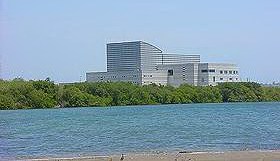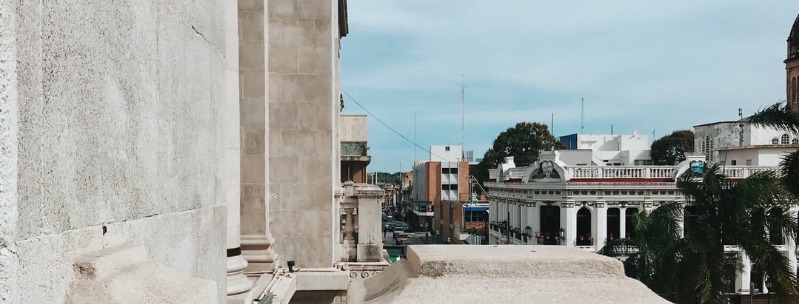Tampico Mexico – Top 12 Things to See 2024
You won’t find Bourbon Street or the popular French Quarter district in Tampico, Mexico. But you don’t need to look hard or far to recognize abundant Creole influences in this Mexican port city. In Tampico, the Creole mark is enduring.
 After arriving in Tampico on Mexico’s upper Gulf coast it doesn’t take the traveler long to realize something is very different about the place. Like in most Mexican communities, there are influences of early Spanish colonization to be seen. There are typical Mexican street names and a bustling common market and a typical city square.
After arriving in Tampico on Mexico’s upper Gulf coast it doesn’t take the traveler long to realize something is very different about the place. Like in most Mexican communities, there are influences of early Spanish colonization to be seen. There are typical Mexican street names and a bustling common market and a typical city square.
But closer examination reveals a strong French influence to the this busy city by the sea, and not just from the French occupation and governorship of the 18th century. Like the photos above, French styles can be found in much of the architecture of the city, including cypress-boarded structures of Louisiana wood, originally constructed by and for Creole “emigres” who escaped the prejudices of the U.S. South in the 19th century and started life anew in many Mexican destinations including Tampico.
These people were often referred to as Creoles who descended from free people of color – popularly called “les gens de couleur libre.” Mixed with French, Spanish, African, Indian or even German, Irish, or Italian bloodlines, this group lived a tenuous existence in a caste-like system of antebellum Louisiana divided among three groups: whites in the upper caste, black slaves in the lower, and the free people of color in between. Exercising their freedom to move about freely, many opted to find new homes in distant places like Mexico and Islands like Haiti to seek their fortune and fame. Others just wanted a place of peace to settle.
The seaport city is located in the southeast area of the State of Tamaulipas and the second most important port of Mexico after Veracruz’s Pajaritos port. Where coal production was once the staple of the local economy, shipping and offshore oil production has taken over as the primary industries.
Tampico’s first founders were the Huastec tribes which settled down on the banks of the Panuco River and formed the Cuauhtemoc villa. Like the Aztecs, these people were first conquered and later slowly assimilated into the new Spanish settlement of the continent.
 Travel and tourism has had mixed success along the northeastern Gulf coast of Mexico. Because of its industrial posture, Tampico never gained the popularity of other Mexican coastal destinations, like Veracruz and Acapulco. But times change and the city has developed as a significant cultural center of the region and ample attractions are bringing more travelers than ever before.
Travel and tourism has had mixed success along the northeastern Gulf coast of Mexico. Because of its industrial posture, Tampico never gained the popularity of other Mexican coastal destinations, like Veracruz and Acapulco. But times change and the city has developed as a significant cultural center of the region and ample attractions are bringing more travelers than ever before.
Visitors will also find that Creole influences have made significant contributions to the local culture, not the least of which is evidenced in the regional cuisine. While it’s easy to find Mexican standards like tortillas and tamales, you can also find French-influenced dishes at restaurants like the one owned and operated by Creole descendant Dona Julia Pinta, a Mexican equivalent of Leah Chase’s “Dooky Chase” restaurant in New Orleans.
 Signs of this migration are still evident around Tampico, from the local cuisine to age-old traditions like the growing of okra for inclusion in the local brand of “gumbo”.
Signs of this migration are still evident around Tampico, from the local cuisine to age-old traditions like the growing of okra for inclusion in the local brand of “gumbo”.
The Liberty Square
The Plaza de la Libertad (Liberty Square) was also remodeled and it now sports its original beauty. At the center there is a beautiful gazebo made of forged iron, a replica of the one initially built. Surrounding the plaza you will find the most beautiful buildings, most of them “Art Noveau” and very similar to those found in New Orleans.
Cathedral of Tampico
The Cathedral of Tampico, a.k.a. Temple of the Immaculate Conception, is a construction that dates back to the 19th Century, and took on its present look after several restorations. Its facade of Neoclassic Style in light brown canter has Corinthian style columns and three enormous doors that give access to the temple. It has two towers, one of which sports a London clock, a gift from Don Angel Sainz Trapaga. In its interior, which has been refurbished recently, there are several wall paintings and other works of art and a beautiful altar Carrara white marmol that resides at its center the image of the Immaculate Conception.
Beach Miramar
This beautiful beach is one of the major tourism places that the Metropolitan Zone has to offer. It is located within the boundaries of Cd. Madero only half an hour from Tampico’s Historical Downtown. The white sand and pleasant waves have made this beach an ideal place for domestic and foreign tourists.
The Plaza de Armas or Plaza de la Constitucion
In 1945, a gazebo located in the center of the plaza was built designed by architect Oliverio Cadeño, transforming its gardens with a “huasteca” style where you will be able to see squirrels climbing trees.
Municipally Palace
To the west of the Plaza de Armas you’ll discover the Municipal Palace. Designed by architect Enrique Canseco it was constructed around 1928. Inside there is a wall mural that reflects local history.
The Bridge Tampico
If you are traveling in your own vehicle, we recommend you a beautiful and relaxing tour of the Puente Tampico (Tampico Brigde). This bridge connects the states of Tamaulipas and Veracruz. Only a few kilometers after crossing the bridge into Veracruz state you will find “La Ribera”, a beautiful destination where you can enjoy fresh seafood and other typical foods prepared in rustic restaurants situated along the Laguna de Tamiahua shoreline. “El Solito”, an ecological center in which you can see zebras, deer, buffaloes and giraffes among other animals, is also located here.
Antique building of Luz y Fuerza
This is the Hacienda Building (a.k.a. edificio de la Antigua Compañia de Luz) that was built around 1918 and 1922, where you will find a monument honoring the people who repopulated Tampico. This monument was built in 1923 during the 100th year anniversary of the founding of the city.
The Piramide de las Flores
The Flower’s Pyramid is located only one block away from Hidalgo Avenue on the Chariel Avenue at the Colonia Flores. This is a mount site of circular form that dates back to the year 1000 AD. It is a sample of indigenous Tampico. The Piramide de las Flores can be seen Tuesday to Sunday from 9am to 5pm.
Maritime Customs Building
At the end of Aduana Street you will find the Edificio de la Aduana (Maritime Customs Building), this is the pride of the Tampico people due to its beauty and for its high historical value. This building was constructed while Don Porfirio Diaz was resident of Mexico. Its construction started in 1898 and was inaugurated by Don Porfirio Diaz on 16th October 1902. Recently, a peasant bridge has been built to facilitate the access of visitors. Guided tours are offered on a daily basis from 9:00am to 12:00pm and from 3:00pm to 6:00pm
The Chairel Lagoon
In addition of being the most important water reservoir in the region, this is a tourism landmark due to its beauty and navigation access where you can practice several water sports like canoeing, jet skiing and sport fishing. On its margins there are several residential areas and the Club de Regatas Corona, a private yacht club that organizes several fishing tournaments throughout the year. You can also find public parks such as the Fray Andres de Olmos Park and the San Pedro Park. San Pedro Park is an ecological park with walking roads, ideal for a walk and admiring the beautiful view of the Lagoon.
House of Culture
That sits right on the old building of the Municipal Slaughterhouse, built in 1923 and abandoned for many years. This beautiful building made of red brick and beautiful glass is located half a block away from the Avenida Hidalgo (Hidalgo Avenue). It has several areas that frequently hold art exhibitions, sculptures, and several other cultural events of interest.
Building of the DIF Tampico
Another of the buildings surrounding the Arms Square that still maintains its original style is the DIF building. Built by Mr. Abel Navarro in 1925, it has several Art Noveau decorations and forged iron balconies now being used by the DIF (a government organization for family counseling and planning).
The Espacio Cultural Metropolitano
Also known as The Metro, this facility is located at the Laguna del Carpintero, less than a kilometer away from the Tampico’s Historical Downtown, and can be reached through Adolfo Lopez Mateos Boulevard. Inside its installation it houses the Metropilitan Theater, an experimental theater, the Temporary Exhibits Gallery and the Museo de La Cultura Huasteca (Museum of the Huasteca Culture) in addition to a large lobby, a library; educational services area, covered parking and an area for exhibit space that can handle up to 3,500 people.
The Metropolitan Theater has a capacity for 1,172 people in two levels. It sports cutting edge technology including a modern lighting system. The Metro is the site for the Huasteca Culture Museum. The Experimental Theater is site for the “Taller de Artes Escenicas”, with a capacity for 320 people.
Final Word
According to the research of Mary Gehman, hundreds of Creole families from Louisiana migrated to Mexico in the late 1850s, many who settled in the Tampico region. Although they no longer speak French and have lost all contact with Louisiana and their Creole roots, these Mexicans continue to cook some of the dishes handed down through generations and intermarry and socialize in many cases with others of the same heritage.
According to Gehman, Louisiana’s offspring in Mexico are today fully acculturated Mexicans, many having married local people of Spanish or Italian descent. However, because Mexicans use the surnames of both their mother and father, in that order, one hears among them the combination of one French and one Spanish surname. Jose Olivier Garcia, for example, which indicates a mother from Louisiana and a father from Mexico. The families’ facial features, hair, and skin tone reflect the same wide range of racial and ethnic mixes seen in Louisiana.
